Text
Sustainable Maintenance of Conservation Areas

The vital role of conservation areas cannot be overstated when it comes to safeguarding the rich tapestry of life that adorns our planet. As bastions of nature preservation, these swathes of land and water provide the necessary refuge for myriad species and ecosystems. However, to uphold their integrity and ensure the longevity of their natural splendor, a commitment to sustainable maintenance practices is crucial. It is through thorough ecosystem care and robust habitat management that we can promise a future where environmental sustainability is not just an ideal, but a reality.
Key Takeaways
Embrace the significance of conservation areas in the global effort for biodiversity conservation.
Understand the indispensable need for sustainable maintenance to safeguard these natural havens.
Recognize the multi-layered approach required for effective ecosystem care and habitat management.
Acknowledge the urgent adaptation strategies necessary to combat environmental challenges threatening conservation areas.
Develop an appreciation for the collaborative work and dedication needed to uphold the principles of environmental sustainability.
Realize the ongoing commitment to innovative conservation techniques for long-term ecological health.
Understanding the Importance of Biodiversity in Conservation Areas
The concept of biodiversity encompasses a spectrum of life that is vital to the resilience and health of our planet. Spanning from the variety of animals and plants in our forests to the genetic differences within species, biodiversity is the foundation for ecological balance and ecosystem services. In conservation areas, with the help of professionals like the ones from www.spez-ag.ch, maintaining species richness not only supports the regions ecologically but also ensures the perseverance of invaluable natural resources that benefit humanity.
What is Biodiversity and Why Does it Matter?
Biodiversity definition points to the diversity found in and among plant and animal species, as well as the ecosystems they encompass. Genetic diversity, a critical component, allows species to adapt to changing conditions, ensuring long-term survivability. The importance of biodiversity lies in its vast contribution to the stability and sustainability of ecological systems as well as its cultural, social, and economic values. Conservation areas are integral in safeguarding this diversity, allowing for a natural balance that supports life in countless forms.
The Role of Biodiversity in Ecosystem Health
Within each ecosystem, biodiversity plays a key role in structuring the food web and ensuring efficient nutrient and energy flow via trophic interactions. Keystone species, those which other species in an ecosystem heavily depend on, contribute to ecosystem stability. Their well-being often reflects the overall biodiversity and ecosystem health, which is a proxy for the ecological significance of a given area.
Threats to Biodiversity in Protected Regions
Despite the recognized ecological significance, biodiversity faces numerous threats, often stemming from human activities. Habitat loss, climate change, pollution, and invasive species are the leading factors that undermine genetic diversity and species richness. Such disturbances can lead to a cascade of changes, disrupting trophic interactions and threatening the very fabric of ecosystems. Effective management of conservation areas is essential for mitigating these threats and securing the continuous provision of ecosystem services.ThreatImpact on BiodiversityCommon CausesHabitat LossReduces living space and food resources, leading to species declineDeforestation, urban development, agricultureClimate ChangeAlters habitats and climate conditions, making survival for some species difficultGreenhouse gas emissions, global temperature risePollutionDegrades habitats and can cause harmful mutations or illnesses in speciesIndustrial waste, agricultural runoff, plastic wasteInvasive SpeciesDisrupts native species through competition, predation, or diseaseGlobal trade, travel, accidental or intentional release
It is evident that the conservation of biodiversity is multifaceted, requiring attention to both natural processes and the challenges produced by external pressures. Implementing policies and management strategies that encompass the full spectrum of ecological considerations is crucial for the preservation and enhancement of these natural treasures.
Strategies for Ecologically Responsible Tourism
youtube
As travel enthusiasts seek more sustainable tourism practices, the concept of ecologically responsible tourism is gaining ground. This approach integrates the well-being of local environments and communities with enriching travel experiences, without sacrificing one for the other. The purpose of ecologically responsible tourism is to minimize the eco-footprint of travel while maximizing cultural enrichment and support for local economies.
Engaging in wildlife-friendly tourism is a critical aspect of this, where visitors observe animals in their natural habitats with minimal disturbance. This requires adherence to strict guidelines regarding interaction with wildlife and use of the environment, ensuring that the natural patterns and behaviors of animals are not altered.
Moreover, conservation-oriented travel goes beyond personal actions; it encompasses a broader ideology where tourism revenue contributes back to the preservation of the ecosystems tourists come to see. Here, travelers become active participants in conservation efforts, contributing to a cycle of sustainability.
Choosing accommodations that uphold eco-friendly standards
Supporting local businesses that prioritize environmentally sound operations
Engaging in guided tours that respect local wildlife and ecosystems
True community involvement is foundational in sustainable tourism. By involving local communities in tourism planning and decision-making, we ensure that those who are directly impacted by tourism have a voice. This collaboration promotes mutual respect, understanding, and the equitable distribution of tourism's benefits.
Implementing these strategies not only creates more meaningful experiences for visitors but also fosters a sustainable model for tourism that benefits local residents, the environment, and travelers alike. As such, the movement towards more ecologically responsible tourism is a collective journey, requiring the commitment of tourists, businesses, and indigenous communities to create a harmonious balance between discovery and preservation.
Effective Management Practices for Invasive Species
Combating invasive species is a crucial aspect of maintaining the health and diversity of our ecosystems. By focusing on invasive species management, we can preserve the integrity of native habitats and prevent economic damage. This section delves into the various strategies for identification and monitoring, implementing effective removal techniques, and establishing preventive measures coupled with public awareness campaigns to tackle this growing environmental concern.
Identifying and Monitoring Invasive Species
Effective management begins with invasive species identification and rigorous monitoring programs. Early detection is key to preventing the widespread impact of non-native species. Engaging citizen science initiatives can enhance our monitoring capabilities and provide valuable data for tracking invasive populations.
Traditional and Innovative Removal Techniques
Once an invasive species is identified, various control methods must be implemented. Manual removal is a traditional and direct approach, while chemical control methods, including the application of herbicides, can be effective for large infestations. Biological control introduces natural predators to manage invasive populations. Meanwhile, innovative technologies are emerging as powerful tools to aid in invasive species removal.
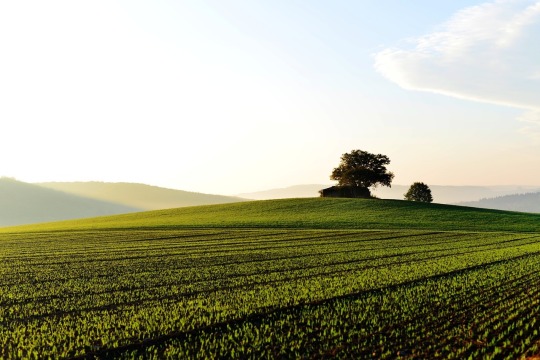
Preventive Measures and Public Awareness
Invasive species prevention involves implementing biosecurity protocols and quarantine measures to halt the spread of invasive species. Education plays a critical role, as public education and outreach programs can dramatically increase local and global awareness, leading to more conscientious environmental stewardship.Management TechniqueDescriptionApplicationsManual RemovalPhysical extraction of invasive plants or animalsLocal infestations, accessible areasChemical ControlUse of herbicides or pesticides to eliminate invasive speciesWidespread infestations, areas where manual control is ineffectiveBiological ControlIntroduction of natural enemies to invasive speciesBalanced ecosystems, long-term managementInnovative TechnologiesModern tools and methods, such as drones or genetic modificationsAreas requiring precision, prevention of future outbreaks
Public awareness initiatives complement these strategies by empowering communities to act as vigilant protectors of their environment. Whether through hosting educational workshops, developing informative campaigns, or engaging in direct action, public participation can significantly contribute to the success of invasive species management programs. Participation in such community-led efforts ensures the health of our ecosystems for future generations.
Maintenance and Sustainable Care of Nature Conservation Areas
The essence of conservation area maintenance lies in the delicate balance between nurturing biodiversity and ensuring sustainable care of these precious ecosystems. To maintain this equilibrium, it is crucial to craft a maintenance plan that incorporates sustainable practices, such as adaptive management and ecosystem monitoring, while being mindful of resource allocation and budgeting. Such a plan becomes the foundation for achieving long-term success in habitat restoration and aligning human activities with nature's rhythms.
Developing a Maintenance Plan with Sustainability in Mind
Creating a maintenance plan is a strategic exercise in foresight and meticulous care. It must integrate stakeholder involvement from the outset, connecting community members, environmental experts, and policymakers. By considering long-term monitoring goals and the implementation of adaptive management strategies, the plan steers towards a future where the conservation area thrives. Key components of effective maintenance planning include:
Resource allocation that reflects ecological priorities
Budgeting with an emphasis on continuous improvement and sustainability
Performance evaluation mechanisms to gauge the success of sustainable practices
Integrating Indigenous Knowledge and Modern Science
The blend of indigenous knowledge and modern science presents an interdisciplinary approach to conservation area management. By valuing the cultural perspectives and traditional ecological knowledge of indigenous communities, conservation efforts can tap into generations of wisdom deeply rooted in sustainable care of the land. This collaboration offers a powerful tool for habitat restoration, allowing for culturally informed and ethically sound practices that honor both heritage and habitat.
Long-Term Monitoring and Adaptive Management Approaches
For conservation efforts to remain relevant and effective, long-term monitoring must intersect with adaptive management. This dynamic process involves real-time data collection, which informs performance evaluation and guides the trajectory of applied conservation strategies. It fosters continuous improvement and ensures that every action taken aligns with the overarching goal of sustainable care within the conservation area. Ecosystem monitoring is not simply an exercise in data gathering—it is a commitment to the wellbeing of the environment we strive to preserve.
In conclusion, the management of conservation areas is a harmonious interplay of planning and action, science and tradition, custom and innovation. It requires resourcefulness, dedication, and a deep reverence for the natural world. With careful maintenance planning, stakeholder involvement, and an openness to learning from both indigenous wisdom and scientific expertise, the preservation of these areas can be a testament to humanity's capacity for stewardship and sustainable coexistence.

Partnering with Local Communities for Conservation Success
The backbone of any successful conservation area is not just the land itself, but the people who live on and around it. This understanding gives rise to the concept of community partnerships—a powerful tool for achieving long-term environmental sustainability and ecosystem care. By actively engaging local communities, we foster a collaborative management approach that amplifies the effectiveness of conservation efforts. Local engagement means providing the residents—often the first stewards—of these natural treasures with the tools and knowledge necessary for capacity building. This empowerment ensures that conservation strategies are not just temporary fixes but become woven into the fabric of the local culture and economy.
Successful examples of such synergistic relationships have demonstrated time and again that when conservation organizations and local communities work hand-in-hand, the impacts are profound and lasting. For instance, programs that involve local residents in data collection and habitat restoration not only equip them with valuable skills but also instill a sense of ownership. This has been seen across numerous initiatives where residents participate in everything from species monitoring to leading eco-tours, exemplifying the direct link between community empowerment and heightened conservation success.
Yet, creating these partnerships is no small feat—it involves navigating cultural differences, building trust, and ensuring a fair distribution of resources. Challenges can arise in aligning conservation goals with community needs; however, by addressing these challenges with transparent and inclusive strategies, conservation becomes a common vision rather than an external imposition. Emphasizing an equitable distribution of benefits through sustainable community-based conservation initiatives can lead to more resilient ecosystems and communities alike. After all, when local communities thrive, so do the ecosystems they safeguard—a true testament to the power of unity in fostering environmental sustainability.
0 notes
Text
Sustainable Agriculture: Environment's Guardian
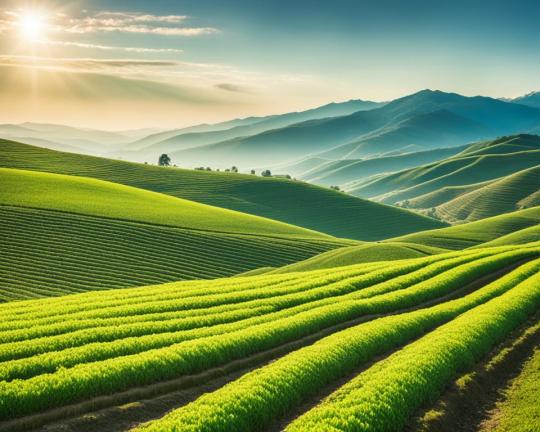
This isn't a fleeting trend. Instead, it's a conscientious shift back to the roots of agrarian wisdom blended with modern innovation. It's here where the health of soil, water, and biodiversity becomes as important as the yield. Eco-friendly farming stands firm as the environment's guardian, ensuring enduring fertile landscapes and a harmonious balance between farmers' livelihoods and the planet's wellbeing.
Key Takeaways
Comprehending the essence of sustainable agriculture as a guardian of environmental integrity.
Recognizing the converging paths of eco-friendly farming and green agriculture for long-term viability.
Understanding the need for agricultural sustainability in the context of future food security and resource conservation.
Appreciating the role of sustainable practices in enhancing soil health and ecosystem balance.
Acknowledging the impact of eco-conscious farming in supporting biodiversity and reducing pollution.
Considering the potential of sustainable methodologies to significantly reduce our carbon footprint.
Reflecting on green agriculture as a core strategy in the global movement towards sustainable living.
Understanding Sustainable Agriculture and Its Importance
Sustainable farming forms the backbone of a robust food system that prioritizes not just productivity but also environmental stewardship and socio-economic balance. It represents a commitment to the planet and its inhabitants, using practices designed to safeguard the environment, ensure food security, and provide for the economic needs of local communities. Grasping the essence of sustainable agriculture is vital to appreciating its role in maintaining and protecting the natural world for future generations.
youtube
At its core, sustainable agriculture fosters a harmonious relationship between land use and the conservation of resources. This approach to farming meticulously balances the need for food production with the necessity to maintain environmental health. Sustainable practices promote the efficient use of water, minimize the use of harmful chemicals, and encourage biodiversity — all fundamental elements of environmental stewardship.
When we talk about food security, we are referring to the assurance that all people at all times have physical, social, and economic access to sufficient, safe, and nutritious food to meet their dietary needs and food preferences for an active and healthy life. Sustainable agriculture plays a pivotal role in this by diversifying crops, improving resilience to climate change, and enhancing food supplies without depleting natural resources or damaging the environment.
The benefits of sustainable farming practices extend beyond the soil to impact the air we breathe, the water we drink, and the biodiversity that enriches our planet. Adopting such practices showcases a proactive form of environmental stewardship that supports a diverse range of plant and animal life, fosters healthier soils, and reduces carbon footprints by capturing carbon emissions in the soil. The direct correlation between sustainable agriculture and the well-being of the ecosystem is undeniable and essential.
With climate change sounding an alarming bell, transitioning to sustainable farming is not just beneficial but imperative. The convergence of climbing population figures and climate volatility poses a daunting challenge to food production systems. Here, the implementation of sustainable agricultural techniques is both a shield and a spear in the battle to secure food for the present and future.
The pragmatic aspect of sustainable farming practices becomes evident when analyzing statistical data. Research consistently reveals that farms practicing sustainable techniques often see not only environmental benefits but also economic ones, suggesting that sustainability is also a sound business model.
Conservation of water and soil leads to long-term fertility and productivity
Diverse ecosystems are less prone to diseases and pests
Communities engaged in sustainable practices enjoy better health outcomes and economic stability
In sum, understanding the importance of sustainable agriculture is foundational to nurturing a world where the environment, economy, and society can thrive together. It is a testament to human ingenuity that we can produce food and other agriculture products in harmony with the earth, confirming that sustainability is not a luxury but a necessity for the present and the future.
Sustainable Agriculture Practices and Techniques
As the agricultural sector evolves, sustainable practices are imperative for the longevity and health of our farming systems. From methods that preserve our genetic heritage by maintaining crop diversity to innovative water-saving agriculture techniques, each approach plays a critical role in shaping a future where farming works in harmony with nature. Unveiling the efficacies of these practices not only relates to enhancing soil health but also includes a marriage of traditional farming with modern agroecology principles, while weaving in the benefits of on-farm renewable energy for a holistic sustainability model.
Diversifying Plant Varieties for Resilience
The intentional cultivation of diverse plant species serves as a cornerstone of sustainable agriculture, significantly boosting farm resilience. By enhancing crop diversity, farmers can deter the spread of disease, reduce dependency on pesticides, and give rise to a more robust agroecosystem capable of withstanding environmental fluctuations. This genetic variance is not only crucial for food security but also stands as a bulwark against climate change and its myriad pressures.
Soil Management and Conservation Practices
Conserving soil integrity is another crucial aspect of sustainable farming. Practices such as strategic crop rotation, the use of cover crops, and the minimization of tillage help maintain and improve soil health. These methods promote a thriving soil biome, discourage erosion, and aid in the sequestration of carbon, fortifying the farmland against both physical and biological degradation.
Water Conservation Methods in Agriculture
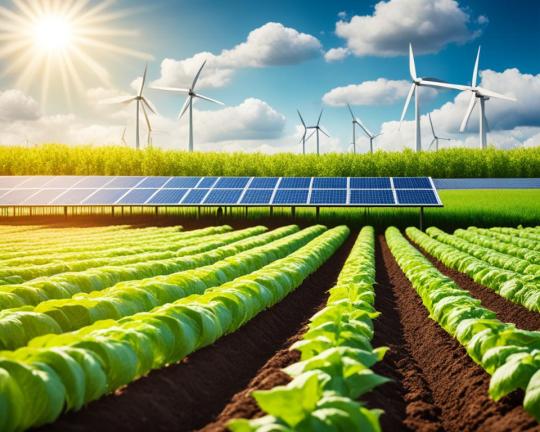
Integrating Livestock and Crops
Enhancing crop diversity is further complemented by the integration of livestock and crops, which maximizes the utility of on-farm resources. This symbiotic relationship enriches the soil with natural fertilizers and optimizes the cycling of nutrients, enveloping the farm in a seamless loop of productivity and sustainability. Engaging in these agroecological practices is emblematic of a commitment to agricultural synergy and abundance.
Adopting Renewable Energy Sources on Farms
The embrace of on-farm renewable energy sources such as solar panels, wind turbines, and bioenergy systems marks a bold step forward in reducing the carbon footprint of our agricultural practices. By harnessing natural energy flows, farms can decrease their reliance on fossil fuels, curtail greenhouse gas emissions, and take significant strides towards energy self-sufficiency—paving the way for a cleaner and more resilient agricultural landscape.
The Impact of Sustainable Agriculture on the Environment
The deliberate pivot towards eco-friendly farming practices embodies a critical evolution in the narrative of modern agriculture. This transformative approach underscores an enduring commitment to nurturing sustainable ecosystems and fosters a future where the land's bounty can be sustainably harvested by upcoming generations. As society gravitates towards climate action, sustainable agriculture emerges as a powerful tool in the quest for environmental harmony and resilience.
Reducing Greenhouse Gas Emissions and Carbon Footprint
One of the most compelling environmental benefits of sustainable agriculture is its capacity to mitigate the adverse effects of climate change by significantly reducing greenhouse gas emissions. Practices such as utilizing cover crops, engaging in reduced tillage, and incorporating on-farm renewable energy harnesses the principle of carbon sequestration. This not only lowers the carbon footprint of farming activities but also enhances the overall health of our planet by stalling the progression of global warming.
Biodiversity Preservation Through Sustainable Farming
Further, the shift towards methods that prioritize water quality and soil preservation lays the groundwork for vibrant biodiversity. By fostering habitats through sustainable land management, farmers contribute to the conservation of various species and their natural habitats, maintaining ecological equilibrium. These eco-friendly farming practices are pivotal in safeguarding our globe's genetic variances and ensuring the perpetual interconnection of life cycles within ecosystems.
Effects on Soil Health and Ecosystems
The intrinsic value of soil health cannot be overstated, with sustainable agriculture practices playing a vital role in enhancing soil fertility and structure. The adoption of organic fertilizers, crop rotations, and the protection of native vegetation all contribute to the stability and sustainability of ecosystems through improved nutrient cycles and microbe biodiversity, offering far-reaching benefits that extend beyond the visible horizon.
Water Quality Improvement and Conservation
Sustainable agriculture also landscapes an innovative path for water conservation and the improvement of water quality. Techniques such as efficient irrigation systems and responsible watershed management reduce runoff and filter pollutants, safeguarding our water supplies. These resources are indispensable not only for agriculture but for all life forms dependent on fresh, clean water for survival.
The Role of Sustainable Agriculture in Fighting Climate Change
In the vanguard against climate change, sustainable agriculture is a formidable contender. It equips societies with adaptive capacities to cope with climatic aberrations, promoting resilient food systems and a reduction in the dependency on fossil fuels. Ultimately, the cumulation of strategic, eco-friendly practices is essential for achieving the global climate action milestones, ensuring we can meet our current needs without compromising the environment for future generations.
Read more:
Cultivating The Green Customer Habit
Help Protect The Environment!
Rise in sea level: a consequence of climate change or not?
0 notes
Text
Headlamps: Vital Tool for Outdoor Excursions
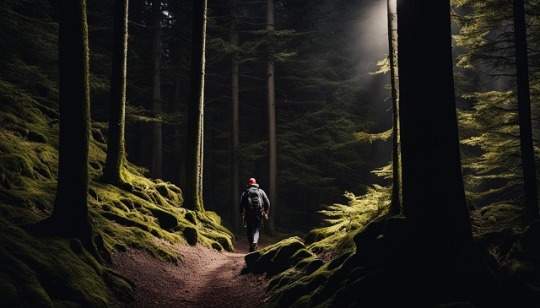
Key Takeaways
Headlamps provide essential hands-free operation enabling safe and efficient nocturnal navigation.
Essential for a multitude of activities, from setting up camp to trail running in low-light conditions.
An indispensable addition to your adventure kit, enhancing visibility and reducing the risk of accidents after dark.
Choosing the right headlamp involves considering brightness, beam distance, comfort, and water resistance.
Headlamps serve as a key safety accessory by deterring wildlife and helping hikers avoid potential hazards.
Modern advancements in technology offer eco-friendly and smart headlamp options for outdoor enthusiasts.
Why Headlamps Are Essential for Nighttime Hiking
As the sun sets and the trails dark, avid hikers understand that the right equipment is crucial for a safe and enjoyable experience. This is when the benefits of a good headlamp, like the ones from https://dwights.co.nz/collections/ledlenser, become undisputedly clear. Not only do head torches provide necessary illumination, but they also ensure hands-free operation, which is pivotal for both safety and convenience during nighttime hikes.
The Importance of Hands-Free Lighting
When traversing the outdoors at night, the ability to use both hands is paramount. Whether for balancing on uneven surfaces, consulting a map, or using hiking poles, hands-free lighting is a non-negotiable aspect of nighttime hiking gear. A reliable headlamp provides a consistent light source without the need to hold a flashlight, allowing trekkers to move confidently and effectively in the dark.

Navigating Difficult Terrain in the Dark
Encountering rocks, roots, and rough terrain is common when hiking, but these obstacles become significantly more challenging to navigate in low-light conditions. Head torches are instrumental in lighting the path ahead, highlighting possible hazards and reducing the risk of missteps that could lead to injury.
Increased Safety on the Trail After Sunset
The benefits of wearing a headlamp extend well beyond simple illumination. Trail safety is a prime concern as visibility decreases, and the likelihood of encountering nocturnal wildlife increases. The light from a headlamp serves as a deterrent for some animals while also making hikers more noticeable to other members of their group and potential rescuers in case of an emergency.FeatureAdvantagesTrail ImpactBright LED LightClear, powerful illuminationHelps in spotting dangers from a safe distanceAdjustable StrapsCustom, secure fit for any head sizeStays in place during rigorous activitiesMultiple Light ModesControl over intensity and battery usageEnables adaptation to various environments and needsWater ResistanceFunctionality in wet conditionsReliable operation in adverse weather
In conclusion, as darkness begins to envelop the trail, the reassurance provided by the glow of a headlamp is indisputable. It's not just a tool for enhancing nighttime vision; it acts as a beacon of safety, allowing hikers to continue their journey with confidence—regardless of the hour.
Choosing the Right Headlamp for Your Adventure
When venturing into the great outdoors, the headlamp selection you make can influence your experience as much as the trail you choose or the weather you encounter. Whether you're a seasoned hiker or a novice camper, understanding the technical features of headlamps will illuminate your decision-making process. Let's shed some light on the key attributes you should consider.
Firstly, when sifting through options, pay close attention to lumens and brightness levels. Lumens measure the total amount of visible light emitted by a source, and in the case of headlamps, higher lumens often translate to better illumination. However, the best headlamp isn't just about the highest lumen count; it's about the right balance between brightness, battery life, and usage.
An equally important aspect is the headlamp's beam distance. This determines how far ahead you can see, which is crucial for preventing accidents on uneven terrain. Pair that with headlamp weight and comfort, and you'll find that a lightweight design makes a big difference during extended wear. No one wants a heavy headlamp causing neck strain several hours into a night trek.
Let’s not forget about the elements. Choosing waterproof headlamps is essential if you're likely to encounter rain or bodies of water. With a waterproof rating such as IPX7 or IPX8, you'll ensure your headlamp can brave the tempest – a dependable ally in unexpected downpours.
Battery considerations should never be overlooked. From disposable batteries to rechargeable packs, each headlamp will have its pros and cons, with rechargeable models being friendlier to the environment and potentially more cost-effective in the long run.

FeatureDescriptionBenefitLumensThe unit that quantifies the amount of light emitted by the headlamp.Ensures sufficient brightness for tasks and visibility.Beam DistanceThe length of area covered by the headlamp's light.Improves safety by revealing further distances ahead.Waterproof RatingThe level at which the headlamp can resist water ingress.Maintains functionality in wet conditions.Weight and ComfortThe heaviness of the headlamp and its fit.Reduces discomfort and fatigue during prolonged use.Battery LifeDuration the headlamp can run before needing a recharge or battery replacement.Ensures reliability and longevity during outdoor activities.
Selecting the ideal headlamp is not just about picking a high lumen output or a reputable brand; it's about assessing your specific needs and the conditions you'll face. A headlamp that serves a mountain biker might not cater well to a fisherman at dawn. Keep the keyword factors in mind: beam distance, lumens, waterproofing, battery life, weight, and comfort, and you'll light up the path to a well-equipped adventure.
Headlamps: A Vital Tool for Your Outdoor Excursion
Venturing into the great outdoors, whether for a night of fishing by a serene lake or an invigorating early morning trail run, requires the right equipment to ensure a safe and enjoyable experience. Among the essential outdoor gear, a multipurpose headlamp stands out as a beacon of adventure lighting, guiding you through the darkness and allowing you to keep your hands free for the task at hand.
"In the heart of the wild, a reliable headlamp is more than a tool; it is a companion that brightens your path, keeps you safe, and supports your adventurous spirit."
Embracing the ethos of responsible adventure, many outdoor enthusiasts seek out eco-friendly headlamps that blend LED efficiency with features like USB rechargeable batteries, minimizing their environmental footprint while maximizing their nighttime visibility. These headlamps are not just about seeing and being seen—they are about preserving the beauty of nature that we all cherish.
Early Morning Trail Runs: Greet the dawn with confidence, knowing that your path is clearly lit.
Late-Night Treks: Continue your journey under the stars without missing a step.
Night Fishing: Focus on your catch without juggling a flashlight.
With these uses in mind, it is evident why adventurers consider a sturdy and efficient headlamp to be a staple in their pack. To shed some light on the characteristics of these indispensable tools, let's explore some popular features of multipurpose headlamps.FeatureBenefitAdventurer TypeLED EfficiencyLonger battery life and brighter lightEco-conscious hikerUSB RechargeabilityReduce waste and ensure easy chargingTech-Savvy trekkerHands-Free DesignMulti-task without hindranceAngler and climberWeather ResistanceDependable in all conditionsAll-season explorer

Innovations in Headlamp Technology
As adventurers and outdoor enthusiasts seek more efficient and versatile lighting solutions, the headlamp industry continues to evolve, embracing new technologies to improve performance and usability. The relentless pursuit of innovation has led to significant advancements in LED headlamp technology, making headlamps an indispensable tool for any nocturnal outdoor activity.
Advancements in LED Efficiency
Leading the charge in the evolution of headlamp technology are the breakthroughs in LED efficiency. Modern LED headlamps now offer unparalleled brightness and clarity while consuming far less power than previous models. This translates to longer headlamp battery life and more reliable illumination for those critical moments in the dark, whether you're scaling a cliff or setting up camp.
Rechargeable vs. Battery-Powered Options
The debate between rechargeable headlamps and their battery-powered counterparts centers around convenience versus tradition. While rechargeable headlamps provide the benefit of fewer battery replacements and are applauded for their environmental friendliness, traditional battery-powered models are often prized for their predictable longevity and the ability to carry spare batteries for extended trips. Both options have a strong following but the rise in rechargeable models suggests a shift towards more sustainable practices in outdoor gear.
Smart Features and Connectivity
Smart headlamps are the latest innovation to hit the trails, boasting features such as Bluetooth connectivity for remote operation and activity tracking. Adaptive lighting technology is another futuristic addition, with some headlamps now able to adjust their beam intensity based on the surrounding light conditions or the direction the user is looking. These intelligent headlamps not only enhance user experience but also increase safety by ensuring optimal visibility at all times. As outdoor gear becomes more interconnected, the potential for smart headlamps to integrate with other devices presents exciting possibilities for the future of outdoor exploration.
0 notes
Text
The Many Benefits of Studying Environmental Science

Environmental science is the examination of the environment and natural resources. It incorporates many different disciplines, including biology, mathematics, chemistry, physics, and geology.
Environmental scientists study how humans affect the environment and protect it. They also explore diverse ecosystems and how to maintain them for future generations. What may be the most essential thing that environmental science does is help us understand our planet and what we can do to keep it healthy for all living things.
The importance of environmental science
There are many benefits to studying environmental science, but one of the most important is that it helps us understand the planet and the importance of protecting it. As we make strides to protect our environment, we also need people to study it. This helps us learn more about how we can improve our environment and live in a healthier world.
Environmental scientists help companies and organizations find resources and develop effective clean energy sources without harming the natural resources around them. They also help create parks and preserve land for future generations.
Environmental science has always been important for understanding how humans affect the environment. Still, now more than ever, those studies are essential for guiding our decisions as we move forward as a society with regard to protecting our planet.
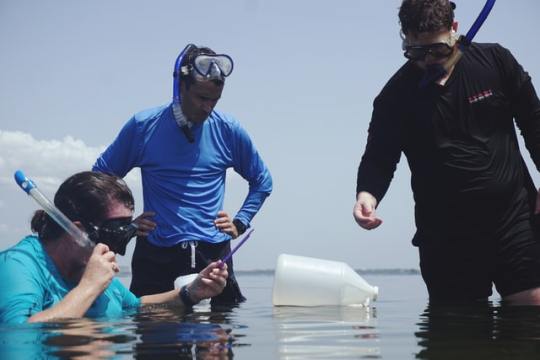
Why you should study environmental science
Environmental science is important because it provides the knowledge to protect our species and world.
Environmental science can help preserve natural resources like water, food, and energy.
It helps you comprehend the effect of human beings on the environment.
It may provide you with job opportunities in the future as environmental scientists demand their expertise.
You will be able to make a difference for people, animals, and plants that live on our planet by studying environmental science.
Studying environmental science can help you find a job
If you're looking for a rewarding and fulfilling job, then studying environmental science may be the perfect career choice for you. Environmental scientists can get jobs in many different fields, including conservation, sustainable development, ecosystem management, and global warming. Environmental scientists have a wide variety of career choices to choose from.
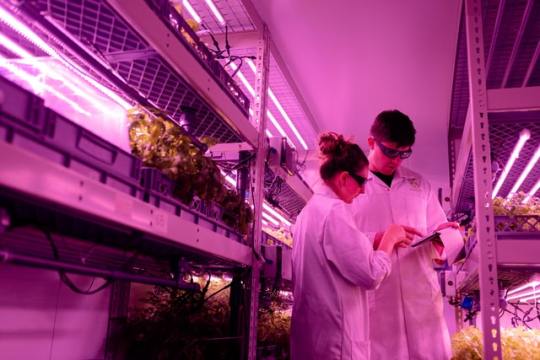
Study the environment, not just one part of it
Environmental scientists study the environment as a whole. They look at different parts of the natural world and how they affect each other. Environmental scientists study things like water quality, air quality, energy use, and recycling rates. By analyzing the environment as a whole, ecological science helps us understand how everything is connected.
Finding your passion in environmental science
One of the great benefits of studying environmental science is that you will find your passion for this field. You can be a wildlife biologist or an archaeologist. You can explore plant life, which is called botany, or the oceans and their aquatic life, called marine biology. Environmental science has so many options available to students that it’s hard to know where to start.
There are many benefits of studying environmental science, like finding a job, the importance of the environment, and finding your passion. You should study ecological science.
2 notes
·
View notes
Text
Climate Change: Solutions To Combat Environmental Damage
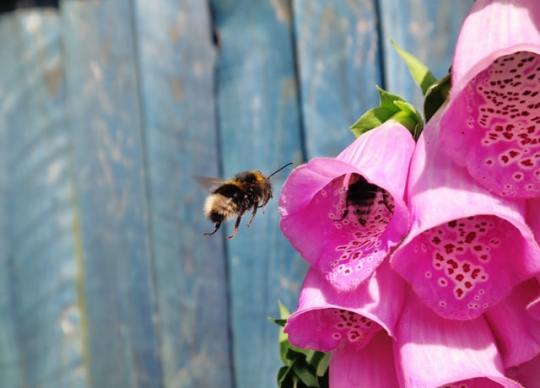
Climate change is destroying habitats, creating refugees, and impacting us in ways we never imagined possible. So what can you do?
The first step to combating climate change is to take care of yourself. You are an individual who can make changes that will have a ripple effect across the world. That implies using less energy, eating healthier, and trying to decrease your carbon footprint as much as conceivable.
Get involved with organizations that are fighting climate change through recycling, reusing products, or advocating for clean energy alternatives for your community. The first step is to take care of yourself so that you have the power to make changes in your life and your communities so that we can tackle this global crisis together.
What is Climate Change?
Climate change is a “change in climate, especially a change marked by an increase, irregularity, or change of seasonality in temperature, precipitation, winds, or other meteorological elements that persist over long periods.” One way it's changing is with shifting seasons. The average date for the first fall frost has been creeping back. Another way it's changing is through rising sea levels. This can cause coastal communities to flooding during high tides and storms.
Climate change is also impacting habitats in all sorts of ways. Animals have to migrate because their original habitat can no longer support them due to climate change effects like drought or loss of prey species. Climate changes are also making it difficult for certain plants to grow near the equator because they need more water than they're getting due to lower rainfall rates.
Climate change is impacting human beings too, like refugees who are fleeing their homes because environmental disasters like flooding made them unlivable places to live anymore.

Steps to Combat Climate Change
The first step to combating climate change is to take care of yourself. Unfortunately, many people don't understand how their behavior can impact the environment. They think that they are too small to make a difference, but what they don't realize is that each person does have the power to make a difference.
You might not be able to stop climate change from happening overnight, but you can take steps in your own life to reduce your carbon footprint and advocate for clean energy alternatives in your community. Join organizations that fight climate change by recycling or reusing products or advocating for clean energy alternatives for your neighborhood.
Each person has the power to make a difference—don’t wait for someone else to do it for you!
Reduce your carbon footprint
The best thing you can do in order to combat climate change is to reduce your carbon footprint. That means using less energy, eating healthier, and trying in every way you can to reduce the impact of your lifestyle on the planet. You might not be able to control how much gasoline you consume or how many miles you fly, but there are lots of ways that you can make changes in your everyday life.
For example, use the dishwasher and washing machine only when they're full and try to do dryer sheets instead of fabric softener for laundry. Drive less and consider walking or biking more often. Turn your heat down and use a space heater instead of an oven or stovetop for cooking whenever possible. There are so many small things we can do every day that will collectively have a big impact on our carbon footprint and help us combat climate change together.

Reduce, Reuse, Recycle
The solution to combat climate change starts with you. You can make a big difference because you are one person who can lead by example and make changes that will ripple out across the world.
The first step is to reduce your carbon footprint by doing simple things like recycling, reusing products, and advocating for clean energy alternatives in your community.
Get involved with organizations that are committed to combating climate change
The first step is to take care of yourself so that you have the power to make changes in your life and in your communities so that we can tackle this global crisis together. Get involved with organizations that are committed to combating climate change through recycling, reusing products, or advocating for clean energy alternatives for your community.
You can make small changes like eating less meat, using energy-efficient light bulbs, and driving less. You can also take it a step further by contacting your elected officials to voice your opinions on the importance of climate change or joining environmental organizations that are committed to fighting climate change.
0 notes
Text
Canada's Environment: What You Need to Know about Canada's Climate

Canada has a lot of different landscapes and climates. The climate of the Pacific Northwest is often wet and rainy, whereas parts of Ontario and Quebec can experience freezing winters. You may not think it’s hard to prepare your wardrobe for all types of weather, but it can be challenging to know what to wear on a daily basis and stay stylish.
Read on for some tips to make your life easier by preparing for Canada's changing seasons with these fun facts about Canada's environment.
The Climates of Canada
Canada's climate is unique as it changes from province to province. On the east coast of Canada, for example, winters are cold and snowy. Meanwhile, on the west coast, winters are milder and not as snowy. However, on the west coast, there is more precipitation in the summer months than on the east coast.
Though seasons change across Canada, here are some tips to make your life easier by preparing for Canada's changing seasons: *In wintertime, layer up with a scarf or a jacket as temperatures will likely drop below zero. *In springtime, you might want to dress lighter as temperatures will be warmer and range from 10°-20°Celsius (50°-68°Fahrenheit).
*In the summertime, dress for warmth as you're likely to experience hot days that range from 30°-40°Celsius (86°-104°Fahrenheit). *In the fall time, prepare for colder temperatures that can range between 10°-20°Celsius (50°-68°Fahrenheit), but you'll also experience warmer days which range between 20°-30 °Celsius (68°*104 °Fahrenheit).
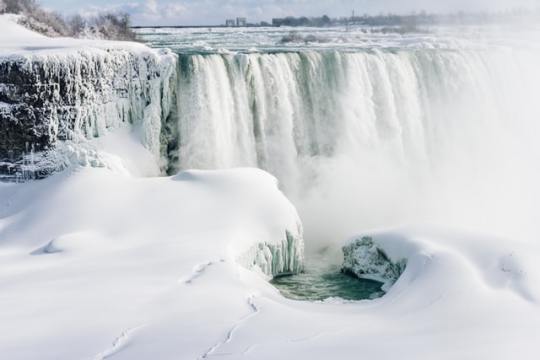
Clothing for Each Climate
When you move to Canada, you will find that there are different climates throughout the country. Places in the northwest may experience more rain and are cold in winter, whereas parts of Ontario and Quebec can experience freezing winters. One of the most challenging aspects of adjusting to Canada's changing climate is figuring out what to wear each day.
What to Wear in Winter in Canada
We all know that winter weather comes with cold temperatures and snow. The best thing to do is layer up your clothing, but you’re not taking into account the wind chill factor.
The wind chill factor is the temperature you feel on your skin because of its wind. The temperature feels colder than what it actually is; for example, if there's a 10 degree Celsius (50 Fahrenheit) temperature outside, but it feels like -20 degrees Celsius (0 Fahrenheit), then the wind chill factor would be 20 degrees Celsius (10 Fahrenheit).
To help combat this, you should wear warm and water-resistant clothes. You should also wear layers that can be taken off or put on as required. This will help keep you warm throughout the day without having to take off multiple layers of clothes at once.

What to Wear in Summer in Canada
Summer in Canada varies from province to province, but you'll want to pack lots of shorts and tank tops for summer in British Columbia and Quebec. The Pacific Northwest is wet and rainy, so pack a raincoat and waterproof shoes to stay dry.
In Manitoba, the prairies are hot and windy. Pack a light jacket or sweater for days when it's cold outside. In Ontario, the climate is often humid with cooler summers. Pack a light jacket for fall weather because it can get chilly at night.
In winter in Canada, snow is a must-bring item! Pack a snow shovel if you're going to drive up north where there's deep snow on the ground year-round. For colder climates in southern Canada, plan ahead by packing hats, scarves, gloves, slippers, and fuzzy socks.
Canada has a variety of climates and, therefore, you'll need to dress differently for each one. For more information on what to wear in Canada's different climates, read this article on Canada's climate and its clothing needs.
0 notes
Text
How Has COVID-19 Influenced the Environment?

Introduction:
Environment forms the important basis for several other life processes. It includes the biosphere, biodiversity, ecosystem, and food chain. For an ecosystem, it is the entire system with which all organisms cohabit in an area. For instance, the ecosystem of our world includes the codependence of animals, humans, plants, and even insects. These factors, when combined, support life and help in overcoming the challenges that species face. Although even non-living things also make up a part of the environment. Some important examples could be that of natural resources.
Natural resources are one of the most integral parts of our life. Without water, air, or sunlight, it would have been impossible to exist for us. We, humans, require the constant support of oxygen, water, and good nutrition to survive. After these, the importance of microorganisms or insects is immense. They help in supporting the minute but necessary tasks that help our survival. No matter how civilized we may have become, even the scientific approach cannot take away the requirement of the environment. We often overlook its importance in today’s developed time. But, with natural disasters, diseases (like the COVID-19 pandemic), humans are forced to realize its need. Hence, we must take care of our environment and tackle the challenges that our future generation might face. Let’s understand this perspective further.
How Has COVID-19 Influenced the Environment?
The COVID-19 pandemic, involving many stages and phases until now has been like a roller coaster ride for our nature. While feeling the relaxation of cleaner air and lesser pollution in lockdown, it has born the effects again.
With increasing restrictions on global travel and even domestic travel, our environment has recovered a little. When people could not move out of their houses, commute through roads or air, there was lesser pollution. I witnessed again a similar impact as there was a steep decline in the amount of load imposed on nature. Because of this wildlife and sea animals also felt the change. There was a lesser amount of hunting, fishing, etc.
With these benefits, it was expected that we would soon realize the importance of a global effort in fighting the oncoming environmental threats. These majorly include a rise in the temperature of the earth, melting glaciers, several animals going extinct. With these factors, not they felt much difference as much should have been. This caused us to return to the stage from where we began. Global warming is an impending threat that would soon show its impact on all of us. While it has already increased the temperature of the sea and even land areas, we need to realize that the next global crisis would only be because of the environment.
With increasing industrial waste, pollution after the resumption of services in most parts of the world, they nullified again the effects. Countries look forward to recovering their ailing economy which hopes to change soon. But, there as well not much difference became notable. With ozone layer depletion and lack of pure oxygen suspected, it would interest to see how the world responds within few years. COVID-19 pandemic may have paused the harm on our environment for a while, but to curb it completely, immediate global measures are a must.
0 notes
Text
Diving Tips Without Causing Any Damages To The Ocean Bodies
It has been confirmed that the majority of the damages occurring in the underwater life has been caused by diving and snorkeling resulting from divers who are in the habit of kicking, touching and breaking the coral reefs. This is categorized as a behavior that leads to gradual degradation and damage of the coral reef. Several studies have revealed how the underwater life has been severely damaged due to these unguided activities of the divers time after time.

About 8.2 percent of damage that is observed in the coral reef is due to the snorkeling activities, which has also continued over the past years due to these unguided activities read more on girlsandboystown.org. Based on the facts gathered on the activities of the divers are gradually affecting the breathtaking views that are experienced under the water. Indeed there are some practices that should be followed while diving to help you avoid causing any damage to any form in the water.
Maintain A Good Distance From The Coral Reef
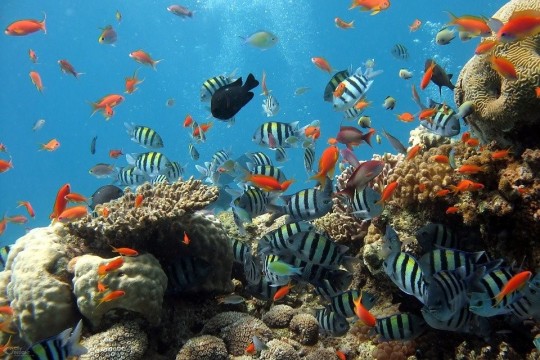
It is important that you do not swim close to the coral reef, which would prevent you from crashing into these bodies. This same rule works if you say you are in the wildlife habitat because getting too close could cause an accidental crashing or breaking of any of these bodies. A good distance would also help you prevent any form of kicking, which obviously, would affect their growth and deform the marine habitat. Most importantly, always follow the diving guide's that you are provided with whenever you are under the water.
Be Sure To Swim Very Well
When you swim or dive very well in the ocean, you will be conscious of your movement, which would help you stay away from crashing to any of the water bodies; also, your movement would not cause you to step in the coral reefs. More so, if you have not snorkeled before, it is crucial you have someone guiding you and also have your life vest on, in case of any eventualities. More so, maintain high buoyancy, as this would help you navigate your way through the coral reef easily and prevent you from causing any damages to them.

Support The Marine Ecosystem
The conservation of the marine habitat is essential as this is what the future divers would also come and enjoy when they pick up the habit. If the life underwater is not preserved and conserved, there would be nothing left for them to enjoy; therefore, there is the need for every diver to support marine life. You can also donate to the marine conservation project, which would be used to care for the ocean habitat and also help train new drivers on how to behave in the ocean. Besides, you can volunteer in the beach cleaning activities, which would prevent toxic items flowing into the oceans and causing any threat to underwater life. To know more about a healthy ocean, woebegone.com.au has compiled several best practices for divers.
0 notes
Text
How You Can Go Greener With Some Eco-Friendly Products
In the effort to reduce the effect of pollution, sandwich bags, plastics and other non-decaying materials, rather than allowing them to impact the earth negatively, they are being recycled and items are being produced out of them. Presently, shoes are made from water bottles, clothes made from plastics and other innovations have been developed due to the impact of waste and pollution. Even with a little help and more consciousness from everyone, the state of the earth can be improved and the effect of climate change and global warming can be limited. Whether you have opted for recycled items, or you are using environmentally friendly cleaning products, you are contributing to a green environment. When you use sustainable materials and biodegradable items which are reusable, this is a good way to reduce the carbon being emitted into the atmosphere.
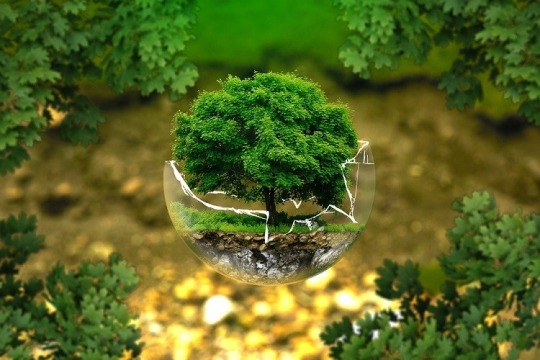
Generally, the increase in the carbon emission has caused a lot of reduction in the quality of air being breathed in by people, and the need to switch to green friendly products is more important, read more on girlsandboystown.org. While the protection of the earth is a collective responsibility of the habitant, it is imperative that you contribute your quota by opting for recycled items and biodegradable products. Using recycled materials and renewable energy saves the planet earth from the possible effects caused by pollution and carbon emission.
Below are some items you can opt to save the world from pollution and global warming caused by no eco-friendly materials.
Stainless Straw. Indeed, the use of plastic straw re the most common habit, but it has caused a lot of harm than the good it was meant for. Looking around, there are always heaps of plastic always lying around places, and the war against plastic is heating up gradually from one nation to another. There is hundreds of business that have switched to the production of stainless steel straws while consumers are advised to save the planet by following suits. You can join the wagon of people that intend to save the planet by making use of stainless steel straws that have silicone ends.

Reduction of deforestation. Some educational material like pencils is made of wood, and they are sourced from the forest. Opting for pencils that are produced from a moderately and responsibly managed forest is another way you are supporting the go green world.
Recycled Shoes. Indeed there are some plastics that are becoming environmental disasters all over the place. However, some companies have deemed it fit to produce shoes form wastewater bottles and reduce their effect on the earth while they are used to produce other useful material. You can no wear shoes that are made from plastic and are ultimately designed to help the environment get rid of unused plastics.

Phone cases. In a bit to reduce the effect of plastic and the pollution it has been causing the environment, some other companies opt to produce phone cases from the recycled plastics, and the denotes that an appreciable amount of plastic materials are used while it helps reduce its effect.
Without a doubt, there are other important items that are eco friendly, which can be found on themindfulmerchants.com, it is only a matter of how much you support a sustainable environment for you to look them up and replace the existing ones you make use of.
0 notes
Text
South Asian Farmers Are Facing Climate Risks
Climate is a significant element of the environment, and it always becomes the major factor in the decrease or increase in the production of crops annually. Thus, the influence of climate in the cultivation of crops often decides the fate of the farmers.
Usually, the climate of South Asia shows a drastic change periodically, which creates a negative impact on the planning of farming. Since the farmers plan to cultivate the seasonal types of crops depending on the certainty of the climatic conditions, so they often need to face the risk factors surrounding the climatic conditions, especially in the South Asian regions.
Influence of Climatic Conditions in Farming in South Asia
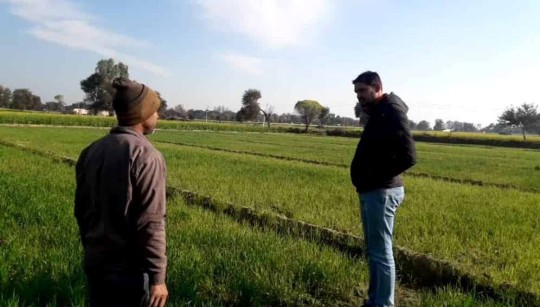
As per the recent collected reports, it has been found that in a small village of West Bengal in India, a farmer named Badal Ray, tends to his 1.5 acres of agricultural land. He would usually cultivate seasonal crops like mustard, wheat, and maize. But unfortunately, the production of crops plunged, thus putting him in severe financial dire straits. As a result, this 48-year aged man turned towards other means of earning for lifting his current financial status by working as a part-time driver of Toto-rickshaws in the evening. Toto-rickshaws are a popular vehicle in India that runs on batteries mainly around the rural and semi-urban sector. One such day during a ride, while chatting with a passenger, who was an Agriculture Consultant, Ray expressed his concerns about his crops. Therefore after listening to his concern, the Consultant explained that the decline in production could be due to the variations in the climatic conditions concerning the weather and temperature of the region. Hence, he suggested a plan to deal with the situation.
Adaptation of the Farmers to Vulnerable Climatic Change
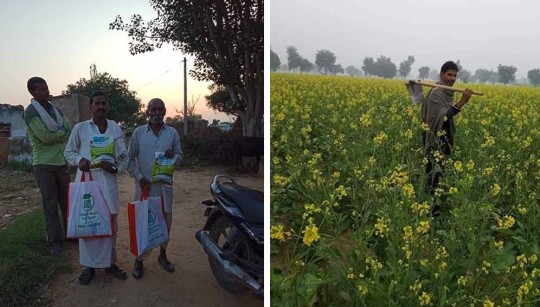
According to the statement of Badal Ray, he would cultivate only wheat and mustard in the winter season. But the Consultant advised him to additionally cultivate vegetables such as potato, tomato, and beans in the 40 percent of his total land. The Consultant even advised him to cultivate marigolds between tomatoes and other vegetables with the explanation that the marigolds protect the plants from the parasitic nematodes. At the same time, Ray can also sell marigold flowers in the market. Apart from this, the Consultant also advised Ray to use drought and heat-tolerant seeds for the cultivation of maize.
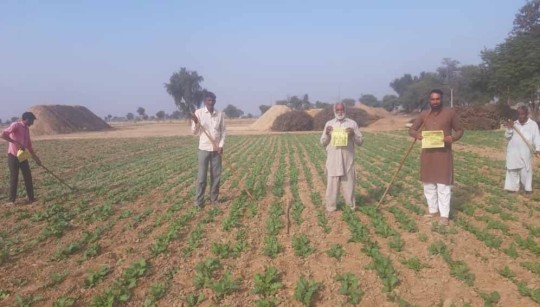
Thus after following the advice and ideas of the Agriculture Consultant, Ray found that within a few months, there was a substantial increase in the productivity of crops. According to Ray, the proper guidance from an expert has changed his life, and he is happy with his earnings now. Therefore, climate change poses several kinds of problems in the production of crops mostly cultivated in the South Asian regions like India, Nepal, and other South Asian countries. Hence, the consequence of the effects due to climatic change depends on the topographical features of a region, types of crops, time and mode of rainfall, farming, and many other factors.
1 note
·
View note
Text
Important factors to consider for environmental care

It has been said time and again that we need to take care of the environment if we need it to take care of us. Tree planting is the most common activity that many people have taken part in to try and protect the environment cover. Many parts of the environment need to be taken care of, such as the terrestrial regions, aquatic regions, and the atmosphere. Various organizations and companies need to be watchful on their regulations and emissions to the atmosphere.
Technology has been of help in helping to manage the environment. Humans are using technology in all the possible ways to fight climate change.
Clean Energy
The biggest challenge when it comes to clean energy is the storage and transmission once it has been harnessed. Tech now comes in to help build a better energy grid that can manage renewable energy sources. As of the year 2013, renewable energy sources accounted for 9% of the total energy consumption in the U.S and 12% of the electricity generation.
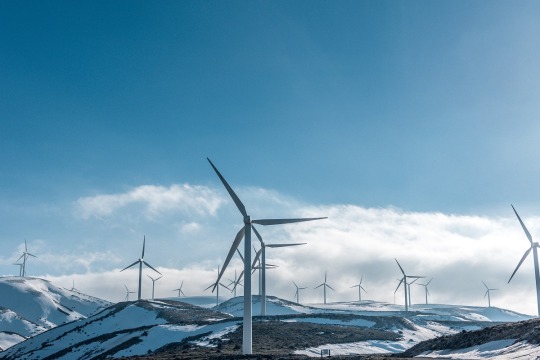
IoT
Internet of things is an exciting yet insightful aspect of the world wide web that keeps us in the know about energy usage patterns, for instance. Some applications have been designed to help in the reduction of the carbon footprint. For example, an app that is used to turn off the lights. The IoT has also been useful in the agricultural sector to help in monitoring your sprinkler system to save on the water.
Open Source Movement
This is a huge way to accelerate research and development. When you open up patents of a company to the public, you have given more space to rapid innovations. Take a look at Tesla's ways of allowing the public to take part in the company's patents to ensure electric cars advance faster.
Big Data
Some individuals and corporations are engaged in the scrutiny of climate-related projects. Big Data refers to all the available information which seeks to impact positively on climate change. UN had a challenge for the Big Data to make use of all the published projects concerning climate change to help tackle the issue.
Mobile Apps
We are continually using smartphones to communicate and research, as well. There are many apps out there, but you must have some interest in the environment to want to look for and use apps that are environment-friendly. These are apps that will help you monitor and also cut down on the carbon footprint and waste. Give O2 is one app that tracks your carbon footprint when you are on the go.

Hackathons
These events are becoming more and more mainstream as days go by. Companies, corporations, and governments are making use of these events to come up with some exciting ideas. In such circumstances, there is the sourcing of information by gathering scientists, journalists, and the people who are more aware of the sustainability of the environment.
Meat Replacement
In case you did not know, the livestock industry is a significant contributor to climate change. That is because of the power requirements in the production of meat products. It takes more power to come up with burgers as compared to several fully powered tablets. Yes, shocking as it sounds. Look at it this way; beef needs 27 times more land to produce as compared to pork. Beef also has five times more global warming emissions and therefore translates to a fifth of the total emissions. It is high time we cut down on animal-based foods.
There are some startups which have this in mind like Beyond meat product. This is a plant protein that looks and tastes just like meat.
0 notes
Photo

Pollution, much like wealth, is not distributed equally in the United States.
Scientists and policymakers have long known that black and Hispanic Americans tend to live in neighborhoods with more pollution of all kinds, than white Americans. And because pollution exposure can cause a range of health problems, this inequity could be a driver of unequal health outcomes across the U.S.
A study published Monday in the journal PNAS adds a new twist to the pollution problem by looking at consumption. While we tend to think of factories or power plants as the source of pollution, those polluters wouldn’t exist without consumer demand for their products.
The researchers found that air pollution is disproportionately caused by white Americans’ consumption of goods and services, but disproportionately inhaled by black and Hispanic Americans.
“This paper is exciting and really quite novel,” says Anjum Hajat, an epidemiologist at the University of Washington who was not involved in the study. “Inequity in exposure to air pollution is well documented, but this study brings in the consumption angle.”
Study Finds Racial Gap Between Who Causes Air Pollution And Who Breathes It
Photo: Dave G. Kelly/Getty Images
Caption: An elevated view of smog and air pollution in Los Angeles.
2K notes
·
View notes
Quote
There are no passengers on spaceship earth. We are all crew.
Marshall McLuhan (1911-1980)
361 notes
·
View notes

